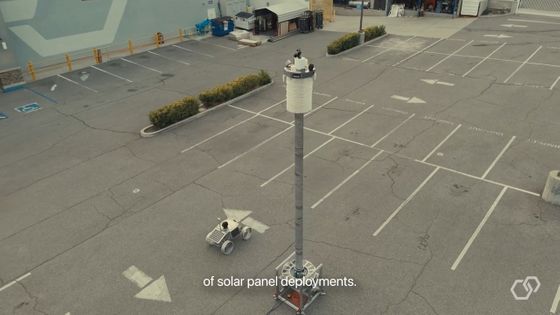Plans underway to build 'street light and solar battery taller than the Statue of Liberty' on the moon

The moon has the potential to become a new frontier for humanity, and plans have already been announced to build not only a lunar base but also
Researchers want to build 'streetlights' on the moon — and they'd be taller than the Statue of Liberty | Live Science
https://www.livescience.com/space/the-moon/researchers-want-to-build-streetlamps-on-the-moon-and-they-d-be-taller-than-the-statue-of-liberty
Honeybee Robotics' plan to build street lights on the moon is called ' Lunar Utility Navigation with Advanced Remote Sensing and Autonomous Beaming for Energy Redistribution' (LUNARSABER) .
The moon's rotation period is about 27 days, so day and night last about 14 days each. The basic idea of LUNARSABER is to store sunlight during the long lunar day and emit light at night to illuminate the surroundings. It has already received funding from the Defense Advanced Research Projects Agency (DARPA) , and various research and development projects are underway.
In the video below released by Honeybee Robotics, LUNARSABER's principal investigator, Vishnu Sanigepalli , explains the project.
LUNARSABER: Powering a Human Presence on the Moon - YouTube
'LUNARSABER will be the first infrastructure on the Moon, making power, communications and lighting highly accessible to all payloads on the lunar surface,' said Sanigepalli.

The moon is an extremely harsh environment, with a near-vacuum, extreme temperature differences, and an uneven terrain. There are places near the Antarctic that have not seen light for nearly 2 billion years.

One of the challenges in exploring the moon is the lack of basic infrastructure, which means that the various lunar rovers need to generate their own power and may shut down during the night when there is no sunlight.

That's where LUNARSABER comes in handy.

LUNARSABER will not only function as a street light on the moon, but also as a power grid.

LUNARSABER employs the simple idea of 'elevating solar panels above the surface of the moon' so that they can receive sunlight even on the rugged lunar surface.

There are two possible arrangements for the solar panels on the LUNARSABER.

The first is a foldable accordion-style solar panel that can be deployed to capture sunlight from any angle, 360 degrees.

The second type is a solar panel that deploys like a sail.

By deploying solar panels away from the Earth's surface, electricity can be generated efficiently from sunlight.

The proposed LUNARSABER tower will be 100m tall, which is taller than the Statue of Liberty (approximately 93m).

The tower will be built using Honeybee Robotics' DIABLO technology, which folds flat metal bands into cylindrical tubes that automatically unfold into towering structures.

The spacecraft only needs to transport the base containing the tower's cylindrical part to the moon.

The 100m tall tower allows visibility up to 37km away.

This will enable services such as cameras, communication systems, and wireless power supply via floodlights to be provided over a wide area.

There is also a port at the base of the tower that can directly charge rovers and other devices.

Sanigepali argued that deploying LUNARSABER would reduce the cost of building a lunar base by providing basic needs such as power, communications and thermal management.

Related Posts:







